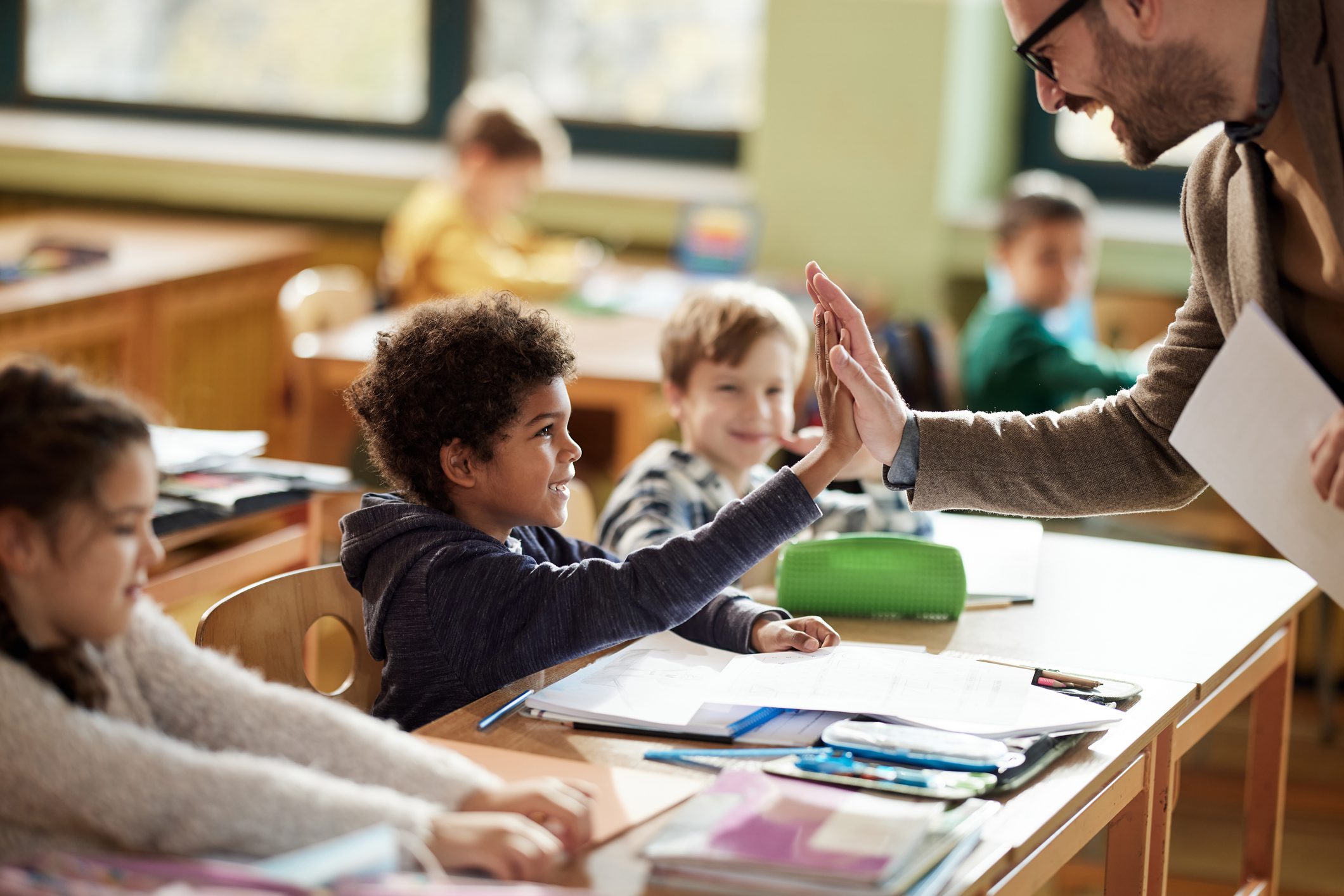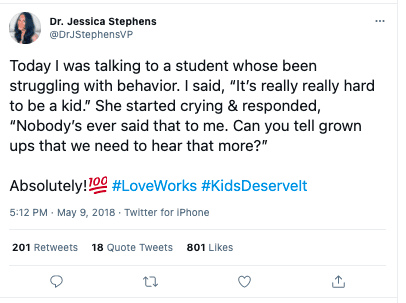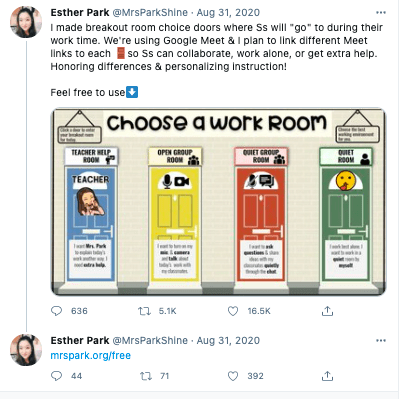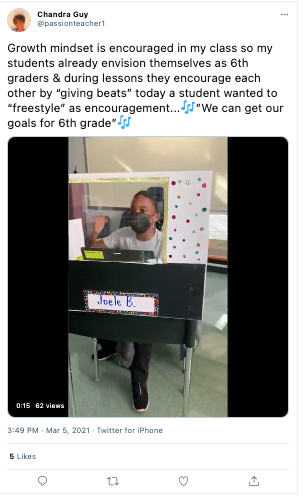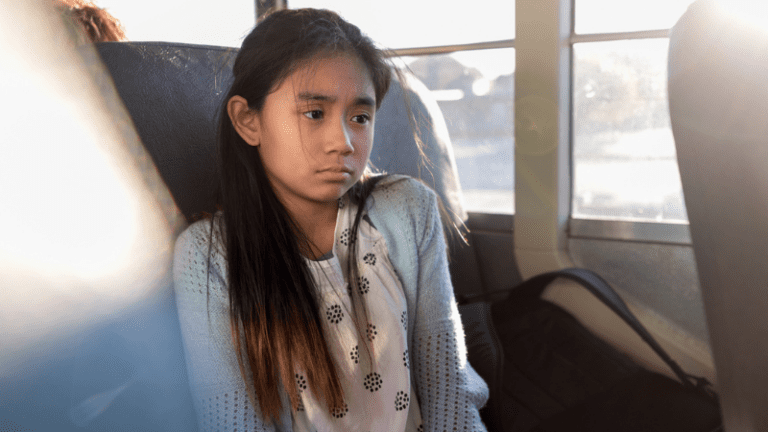It can feel like disruptions of regular classroom life are becoming increasingly common. The pandemic, political debates surrounding education, national events that make it into classroom discussion. It all seems to make settling into a “new normal” feel like an impossibility for both teachers and students. These constant disruptions can make it really hard to tell just how our students are truly doing. And it leaves us with a lot of questions.
How can we help our kids who are facing trauma ?. How can we help build resilience in the students at our schools? How do we help them bounce back, overcome challenges, and succeed despite setbacks that are out of our control?
Building resilience can seem complex, especially when you get into the neurological science about why positive interactions affect kids so much. However, building resilience in students, especially at this critical moment, doesn’t have to be complicated, says Caelan Soma, PsyD, chief clinical officer with Starr Commonwealth, an organization that offers resources to help schools build trauma-informed, resilience-focused communities.
“Every time we have a positive interaction—a smile, a nod, an ‘it’s OK,’ or ‘let me help’—all of those interactions change our body and have an impact on our nervous system in a good way,” Soma explains.
Here are 10 simple ways that educators can build resilience in students to help them overcome stress and trauma.
1. Greet each student in hallways and classrooms
Connection is a cornerstone of building resilience in students. It doesn’t need to be a long conversation with each student, but each student needs to feel seen.
“Every child in the building needs to have a sense that somebody notices that they are there, and somebody would notice if they weren’t,” Soma says.
Principal Al Johnson from McKinley Area Learning Center in Minnesota roller skates through the halls every morning to greet his students. But you don’t need to rollerskate to make kids feel welcome. Even something as simple as saying hello to each student by name when you see them in the hallway or they enter a classroom or Zoom meeting creates a sense of belonging. Even better? Tell them, “I’m glad you’re here!” or “It’s great to see you!” Need more ideas? Check out these creative ways to greet students.
2. Encourage kids to talk with each other at the beginning or end of class
Students need to feel like they’re part of their school community. One way to do that is by encouraging conversations between students to help them build relationships with their peers.
“Allow kids to get to know each other and notice each other,” Soma says.
Time is valuable so it’s OK to start small. Even devoting just a few minutes at the beginning or end of class can help promote a sense of community. Ask each student to name something they love, or ask questions, such as “Who has a brother?” or “Who has a dog,” and simply ask kids to raise their hands for each answer.
3. Acknowledge the challenges kids have been through over the past few years
Build resilience in students by acknowledging how difficult life can be and celebrating that students have made it to this point in their lives. It’s important to acknowledge that just being in the classroom each day is a win!
Aim for a tone that’s realistic but upbeat and hopeful. For example, vice principal Dr. Jessica Stephens shared on Twitter, “Today I was talking to a student who’s been struggling with behavior. I said, ‘It’s really really hard to be a kid.’ She started crying & responded, ‘Nobody’s ever said that to me. Can you tell grown ups that we need to hear that more?'”
4. Empower kids by making them helpers
Students feel worthy and valuable when they’re able to help others. For example, when students get involved with their peers and help within the school, it makes them more confident and attached to their community. “They light up,” Soma says.
Combine formal approaches, like these flexible, fun classroom job charts, with more ad-hoc approaches, like pairing kids together in a breakout room on Zoom to work on a lesson. ELA teacher Ester Park created choice room doors leading to breakout rooms in Google Meet where students collaborate and help each other.
5. Teach students to notice their body cues
Too often, people talk about emotional regulation without first helping kids see the signs that they feel dysregulated. Help kids to talk about how their bodies feel when they are tired, nervous, hungry, or anxious by incorporating social-emotional learning into your school’s routines.
For instance, start the day by asking students to describe how they’re feeling. During lessons or storytime, ask them to identify and empathize with how fictional characters are feeling.
You can also check out these simple ways to incorporate social-emotional learning throughout the day.
6. Offer options when students need a break
After you’ve taught kids to notice the signs that something is “off” for them, offer options for helping get them back on course. For example, that might include going for a walk, coloring, or having a snack. Empower them to choose a solution for themselves.
Calm down corners like these can be created in classrooms, whether students are learning in-person or remotely, to help kids recenter and refocus, so they can join learning again.

7. Let your students reset with brain breaks throughout the day
Incorporate socio-emotional regulation into each class. Teachers can gauge what that should look like in their students. For instance, if the class is buzzing, a few deep breaths will go a long way. On the other hand, if students are in an afternoon slump, jumping jacks might be more appropriate to get students’ blood pumping before a lesson. You can also rely on educational brain breaks like these to let students reset while helping them learn.
8. Revisit the rules
With so many things changing so quickly, it’s helpful to regularly revisit rules and expectations for students. Understanding what they are working toward, and the support that’s in place to help them achieve it, helps build resilience. Now is also a great time to remind yourself or your staff about what makes good classroom rules with these helpful tips.
9. Tell students that you expect them to succeed, but you’ll help them get there
Making clear that you have high expectations, and will help students achieve them, keeps kids in a growth mindset, Soma says. Whether it’s a challenging academic or behavior goal, tell kids, “You might not be there yet, but together we’re going to get there.”
Chandra Guy has a creative way to motivate her entire class to cheer on their peers. She shared a video on Twitter and said, “Growth mindset is encouraged in my class … they encourage each other by ‘giving beats’ today a student wanted to ‘freestyle’ as encouragement…”
10. Understand that you can meet the challenge
One of the most important thing educators do each day is strengthen the school community. Meeting students where they are and finding new ways to reach them will leave them feeling valued and appreciated. Although we can’t change what’s happened to our students, we can control how we treat them every day while they’re in our care.
“When we talk about resilience, it’s a way for us to find hope in our experience,” Soma says.
With so much existing knowledge and tools like these, educators are more prepared than they may think to help students.
Build a community of resilience at your school.
Are you looking for more ways to help build resilience in students who experience trauma and toxic stress? The Trauma-Informed Resilience-Focused School Accreditation program can help your school address student needs beyond academics, such as providing nourishment, safety, structure, and social and emotional support.
EXPLORE THE TRAUMA-INFORMED RESILIENCE-FOCUSED SCHOOL ACCREDITATION PROGRAM
